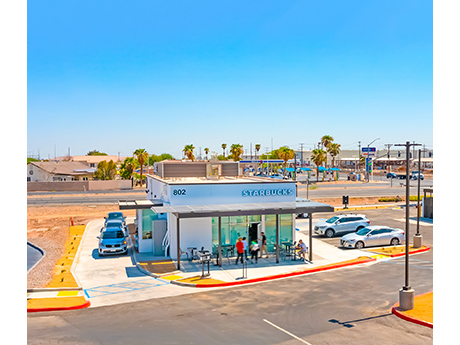— By Matt Davis —
Imperial County is deeply intertwined with agriculture, experiencing significant growth in both farmable acreage and the value of its agricultural outputs. The region has had a 20 percent increase in the number of farms, a 40 percent expansion in farmed acreage and a nearly 65 percent rise in the market value of agricultural products sold over the past five years. However, agriculture is not the only growing industry in the Valley. It will also soon be recognized for its lithium extraction and geothermal energy production, as well as its role as a strategic logistics hub.
As newer industry sectors continue to grow and evolve in the region, their demand for land will also increase. Fortunately, Imperial County boasts ample available land to meet these needs. Investor interest in Imperial Valley land has surged as agricultural areas — despite continued growth — are increasingly transitioning to higher and better uses in key areas of the Valley.
From Farming To Energy
Forward-thinking investors and developers have begun to purchase and reposition legacy agricultural land to support emerging lithium mining operations in northern Imperial County and logistics users near the Calexico-East port of entry in the south. They often lease the land back to farmers while they move through the entitlement process.
Tapping into the lithium-rich geothermal brine from the Salton Sea is not a recent development. Energy producers have used the brine as a source of renewable geothermal energy production for the past 30 years. What is new is that less than a year ago, the U.S. Department of Energy released a comprehensive analysis of the lithium concentration in the brine and determined that there was nearly 18 million extractable tons of the mineral present in the brine and surrounding reservoir rocks. This discovery cements Imperial Valley as a domestic source of sustainable lithium that is capable of supplying enough of the material to manufacture 375 million electric vehicle batteries. And it can do this while producing geothermal energy. These functions will also accelerate the rate at which some of the region’s legacy agricultural land will transition into a higher use.
There are currently three well-known companies buying land in the area to develop commercial solutions for lithium recovery. More are expected to follow, which will further increase the appetite for transitional development land in this rapidly growing sector.
Border Benefits
The symbiotic relationship between Imperial Valley and Baja California, along with the trend of nearshoring, is another significant factor driving demand for transitional development land in Imperial County. On the southern side of the border, U.S.-, Japan- and China-based manufacturers are moving or outsourcing production operations to Tijuana and Mexicali to mitigate logistics issues, enhance collaboration and avoid geopolitical conflict.
As a result, the industrial market in Northern Baja has grown considerably over the past 10 years. It has reached 33 million square feet in Mexicali, a city with a long-standing history as a food processing hub for Imperial Valley producers, with agricultural outputs being sent south for processing and packaging before returning as end-user consumables.
This growth has positioned the Calexico-East port of entry as a pivotal trade gateway between the United States and Mexico, with truck crossings increasing by nearly 40 percent since 2014. Recently, the combination of nearshoring and increased agricultural output from Imperial Valley has spurred demand for industrial and distribution space in Calexico. Rather than sending multiple trucks with various U.S. and Canadian destinations through the gateway, some manufacturers and food processors are sending fewer loads through the crossing and breaking them apart at cross-dock facilities north of the border before sending them to their final destinations. This has deepened the already symbiotic relationship between the two regions and increased demand for transitional development land in the process. There are more than 3,000 companies from Asia that have already established themselves in Mexico — and that number is expected to grow.
These two growth factors are alluring to investors and developers alike as Imperial Valley looks toward a prosperous future made possible by lithium-rich brine, a strategic port of entry that avoids heavily congested coastal interstates, renewable energy production and an abundance of legacy agricultural land primed for redevelopment.
The expected long-term growth is not without its challenges, however, and California’s bureaucracy can be cumbersome to navigate at times. Nevertheless, the multitude of opportunities in Imperial Valley are attractive, and challenges have yet to discourage some of the most sophisticated investors, developers and corporations.
Matt Davis, Platform Leader, Land Advisory Group, Cushman & Wakefield in San Diego


